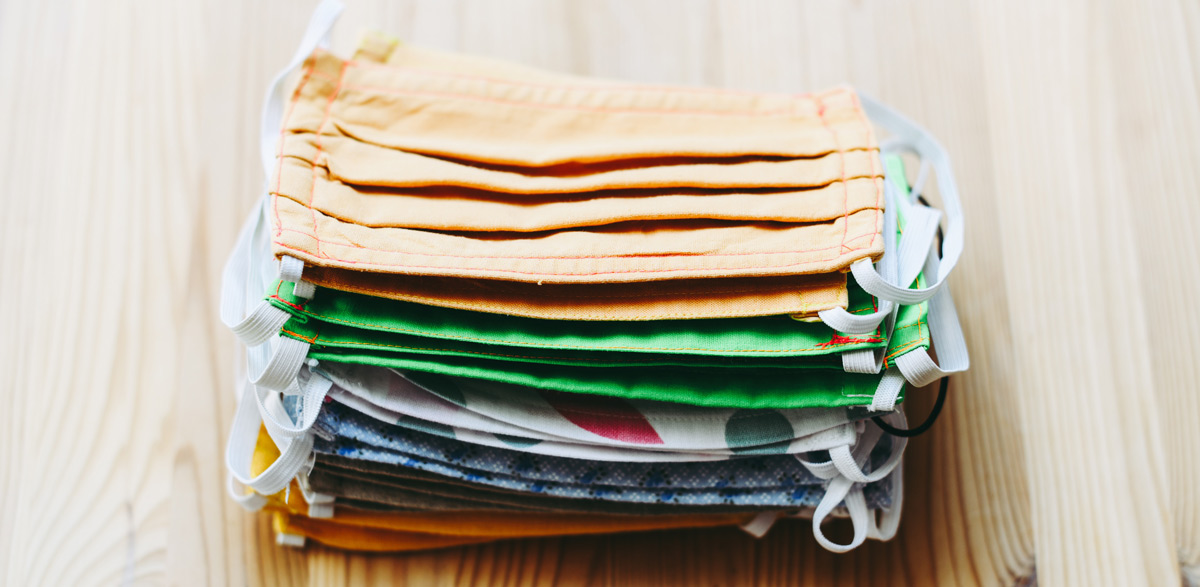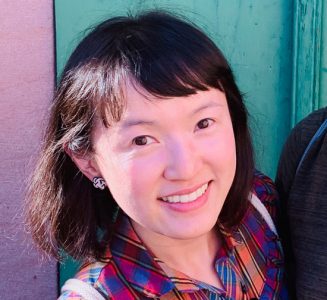
Most scientists and health authorities support wearing cloth face masks in public to help prevent the spread of COVID-19. A team of UBC researchers led by Dr. Jing Wang, a clinical instructor in the faculty of medicine, and Steven Rogak, a professor of mechanical engineering who studies aerosols, decided to test the most popular types of mask fabrics to find out how well they filtered particles while remaining breathable. Here, they share their findings.

Dr. Jing Wang
What approach did you take for your study?
Steven Rogak: We took an engineering approach from the beginning, focusing on practical issues like breathability and construction of the mask, whether it would wick moisture and how heavy it was. We focused on particles larger than one micron because these are likely most important to COVID-19 transmission.
Dr. Jing Wang: We systematically tested 41 different materials for the outer and inner layers of the mask and for the filter layer. We looked at how materials were constructed—whether they were knit, woven, cut pile or non-woven—and fabric type, testing different synthetic and non-synthetic materials. We also looked at overall mask design. Recent WHO guidelines recommend three layers for a non-medical mask: an absorbent inner layer near the mouth, a middle filtration layer and an outer layer exposed to the external environment.

Steven Rogak
What did you find to be the best materials for homemade masks?
Rogak: A double-knit cotton is the most effective of the common fabrics for particle filtration. Its relatively open structure makes it breathable. The yarns also tend to fray slightly, exposing the particles to the smallest component fibers, which is what you want in a good filter.
Another good filter is dried baby wipes, which you can swap out. They’re made of spun lace polypropylene, which is also found in surgical and N95 masks. They don’t contain bleach or other chemicals that can cause asthma or breathing problems. They’re better filters than most cloths (although still inferior to N95 materials), because they’re breathable while being able to trap particles.
Dr. Wang: As for layers, cotton and silk are good for the inner layer against your skin, where you want something that will wick moisture away. Nylon, polyester satin and polypropylene are better suited for the outer layer because they are more waterproof – but you need to be careful to use very breathable fabrics for all layers.
How do DIY masks stack up against commercial non-medical masks?
Rogak: Our results showed that a mask with two layers of low-thread-count quilting cotton is both comfortable and breathable. In fact, such a mask with an added three-ply dried baby wipe filter was as effective as a commercial non-surgical mask at stopping particles, and almost as breathable. It filtered out up to 80 per cent of 3-micron particles, and more than 90 per cent of 10-micron particles.
Dr. Wang: The COVID-19 particle is only around 0.1 micron in size, but it is always attached to something larger, like the droplets produced by breathing, talking and coughing, which are typically larger than 5 microns. An N95 mask can filter most particles 0.3 microns or larger, but even an N95 mask is going to take in large, massive droplets with lots of viruses if it does not seal against the face. A well-fitted, well-designed cloth mask with a baby-wipe filter will be more effective at filtering 5- or 10-micron particles than a poorly fitted N95 mask.
Do certain mask designs ensure a better fit or comfort level than others?
Rogak: Certain shapes work better, and these are the shapes that have been adopted by N95 masks. The mask should not sit flat against your mouth and nose, because it will be less breathable, as there’s only one very tiny portion of the fabric actually exchanging air. Even if it’s made of breathable material, it won’t feel that way. You need to create a bit of an air pocket, with a bigger curvature in front, so that the whole mask is engaged in air exchange.
Dr. Wang: It’s very important to have a good seal around the mask. The highest leak rates are around the nose, chin and the cheeks, and pleated-style masks tend to leak the most. People who have beards, thinner faces or more prominent noses will have more trouble with leakage than those with fuller faces and smaller noses. The nice thing about making your own mask is that you can make it a shape that works well for your face.
The researchers recently published their findings in the open-access repository arxiv, and Dr. Wang continues to share information on The Free Mask Project website, a grassroots initiative she is spearheading.